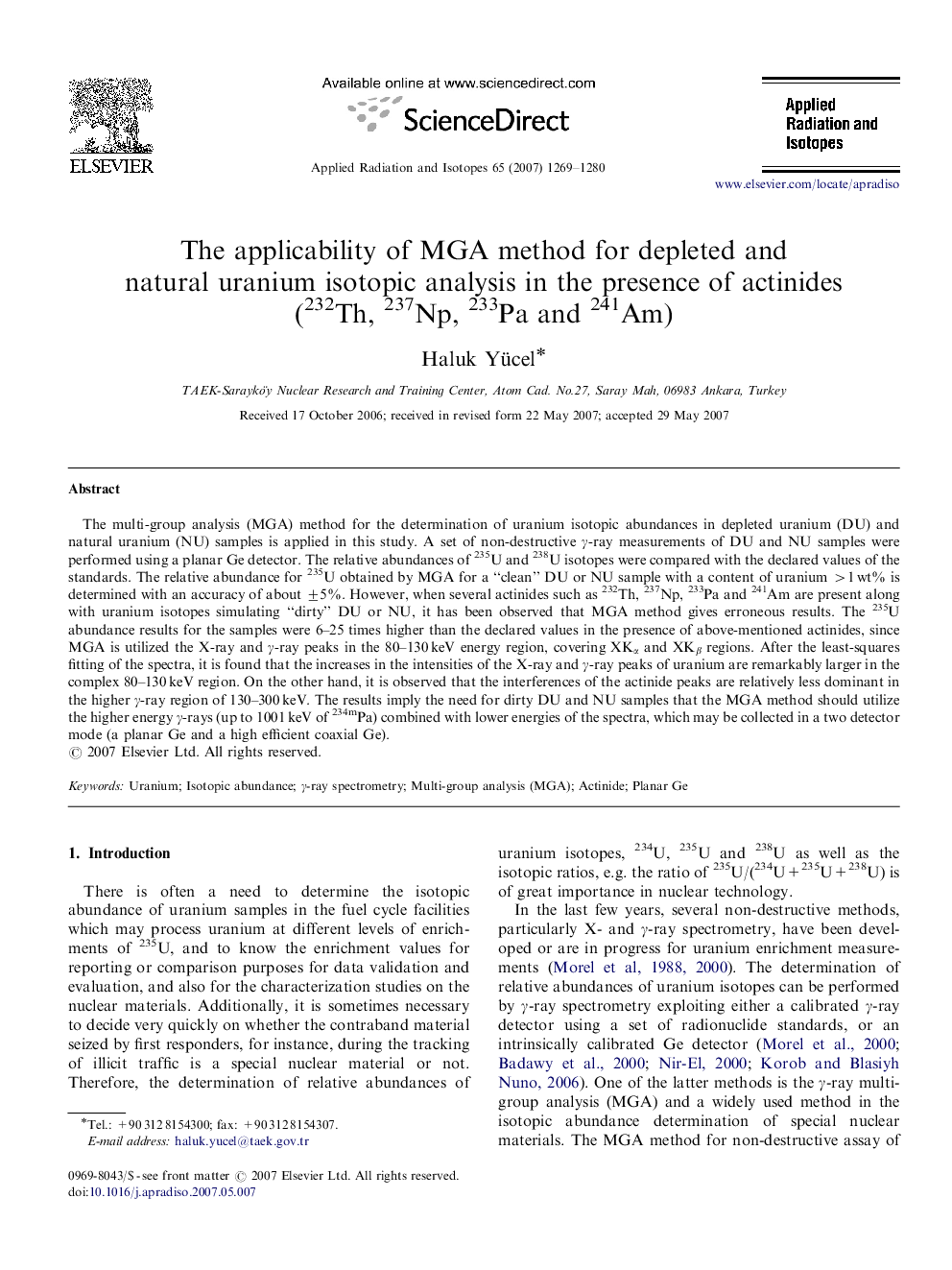| Article ID | Journal | Published Year | Pages | File Type |
|---|---|---|---|---|
| 1877236 | Applied Radiation and Isotopes | 2007 | 12 Pages |
The multi-group analysis (MGA) method for the determination of uranium isotopic abundances in depleted uranium (DU) and natural uranium (NU) samples is applied in this study. A set of non-destructive γ-ray measurements of DU and NU samples were performed using a planar Ge detector. The relative abundances of 235U and 238U isotopes were compared with the declared values of the standards. The relative abundance for 235U obtained by MGA for a “clean” DU or NU sample with a content of uranium >1 wt% is determined with an accuracy of about ±5%. However, when several actinides such as 232Th, 237Np, 233Pa and 241Am are present along with uranium isotopes simulating “dirty” DU or NU, it has been observed that MGA method gives erroneous results. The 235U abundance results for the samples were 6–25 times higher than the declared values in the presence of above-mentioned actinides, since MGA is utilized the X-ray and γ-ray peaks in the 80–130 keV energy region, covering XKα and XKβ regions. After the least-squares fitting of the spectra, it is found that the increases in the intensities of the X-ray and γ-ray peaks of uranium are remarkably larger in the complex 80–130 keV region. On the other hand, it is observed that the interferences of the actinide peaks are relatively less dominant in the higher γ-ray region of 130–300 keV. The results imply the need for dirty DU and NU samples that the MGA method should utilize the higher energy γ-rays (up to 1001 keV of 234mPa) combined with lower energies of the spectra, which may be collected in a two detector mode (a planar Ge and a high efficient coaxial Ge).
